Are you in the manufacturing industry and looking for an efficient way to bend and shape metal sheets? Look no further than the mechanical press brake. In this article, I’ll be discussing the benefits and features of this versatile machine. Whether you’re a small business owner or a large-scale manufacturer, the mechanical press brake is a valuable tool that can save you time and money.
The mechanical press brake is a powerful machine that uses mechanical force to bend and shape metal sheets. With its robust design and precise control, it offers a high level of accuracy and repeatability. Whether you need to create simple bends or complex shapes, the mechanical press brake can handle a wide range of applications. Its versatility makes it a popular choice in industries such as automotive, aerospace, and construction.
One of the key advantages of the mechanical press brake is its speed and efficiency. With its powerful motor and hydraulic system, it can quickly and accurately bend metal sheets with minimal effort. This not only increases productivity but also reduces the risk of human error. Additionally, the mechanical press brake offers a high level of control, allowing you to adjust the bending angle and force to meet your specific requirements.
A mechanical press brake is a versatile and efficient machine used in the manufacturing industry to bend and shape metal sheets. It is a vital tool for fabricating various metal components used in industries such as automotive, aerospace, and construction.
The press brake consists of a sturdy frame, a motor-driven ram, and a die set that is responsible for bending the metal sheet. It operates by applying force to the metal sheet, causing it to bend to the desired angle. The machine’s precise control and high level of accuracy allow for consistent and repeatable bends, ensuring the quality and precision of the final product.
One of the key advantages of a mechanical press brake is its speed and efficiency. The machine can quickly and accurately bend metal sheets, increasing productivity and reducing production time. This makes it an ideal choice for high-volume manufacturing operations where time is of the essence.
Another benefit of using a mechanical press brake is the reduced risk of human error. The machine’s automated operation eliminates the need for manual bending, minimizing the chances of mistakes and ensuring consistent results. This not only improves the overall quality of the fabricated components but also reduces the need for rework or scrap, saving time and resources.
A mechanical press brake is a powerful tool that plays a crucial role in the metal fabrication industry. Its versatility, precision, and efficiency make it an indispensable asset for manufacturers looking to produce high-quality metal components.
A mechanical press brake is a complex machine that consists of several key components, each playing a crucial role in its operation. Understanding these components and their functions is essential for anyone working with or operating a mechanical press brake. Let’s take a closer look at the main components and how they contribute to the bending and shaping process:
Understanding the components and functions of a mechanical press brake is essential for maximizing its potential and ensuring safe and efficient operation. Each component plays a vital role in the bending process, contributing to the machine’s accuracy, repeatability, and overall performance.
When it comes to metal fabrication, the mechanical press brake offers several advantages that make it a popular choice among manufacturers. Let’s take a closer look at the benefits of using this versatile machine:
1. Accuracy and Repeatability
One of the key advantages of a mechanical press brake is its high level of accuracy and repeatability. The machine’s precise control allows for consistent bending and shaping of metal sheets, ensuring that each piece meets the desired specifications. This level of accuracy is crucial, especially in industries such as aerospace and automotive, where precision is of utmost importance.
2. Speed and Efficiency
Another advantage of using a mechanical press brake is its speed and efficiency. With its motor-driven ram, the machine can perform rapid and precise bending operations, significantly reducing production time. This increased speed and efficiency translate to higher productivity and cost savings for manufacturers.
3. Versatility
The mechanical press brake is a versatile machine that can handle a wide range of applications. Whether you need to bend thin sheets or thicker plates, this machine can accommodate different metal thicknesses and sizes. Its versatility makes it ideal for various industries, including construction, automotive, and manufacturing.
4. Reduced Risk of Human Error
By automating the bending and shaping process, the mechanical press brake reduces the risk of human error. With its precise control and programmable features, the machine can consistently produce accurate results, minimizing costly mistakes. This not only improves product quality but also reduces waste and rework.
5. Cost-Effective Solution
Investing in a mechanical press brake can be a cost-effective solution for manufacturers. Its speed, efficiency, and accuracy increase productivity and reduce production costs in the long run. Additionally, the machine’s versatility allows for a wide range of applications, eliminating the need for multiple specialized equipment.
The mechanical press brake offers several advantages that make it a valuable tool in the metal fabrication industry. Its accuracy, speed, versatility, and cost-effectiveness contribute to improved productivity and overall performance. Whether you’re in the automotive, aerospace, or construction industry, a mechanical press brake can help streamline your manufacturing process and deliver high-quality results.
There are several common types of mechanical press brakes, each with its own unique features and advantages. Let’s take a closer look at some of these types:
Each type of mechanical press brake offers its own set of advantages and is suitable for specific applications. It is important to consider factors such as the type of material, thickness, and complexity of bending operations when choosing the right press brake for your manufacturing needs.
By understanding the different types of mechanical press brakes available, you can make an informed decision and select the most suitable one for your specific requirements.
When it comes to selecting the right mechanical press brake for your manufacturing needs, there are several important factors to consider. Here are some tips to help you make an informed decision:
Remember, choosing the right mechanical press brake is crucial to ensure efficient and accurate metal bending operations. By considering factors such as material, thickness, complexity, production volume, space, and budget, you can make an informed decision that meets your specific manufacturing needs.
The mechanical press brake is a versatile and efficient machine that offers a high level of accuracy and repeatability in bending and shaping metal sheets. Its speed, efficiency, and precise control make it a valuable tool in industries such as automotive, aerospace, and construction. With its sturdy frame, motor-driven ram, die set, backgauge, and control system, each component contributes to the machine’s overall performance and reliability.
The mechanical press brake provides several advantages, including accuracy, repeatability, speed, efficiency, versatility, and cost-effectiveness. These advantages make it an essential tool in the metal fabrication industry, improving productivity and delivering high-quality results.
When choosing a mechanical press brake, it is crucial to consider factors such as the type of material, thickness, complexity of bending operations, production volume, space, and budget. By carefully evaluating these factors, manufacturers can make an informed decision that meets their specific needs and maximizes their productivity.
The mechanical press brake is a reliable and efficient machine that offers a wide range of benefits in metal fabrication. Its accuracy, speed, versatility, and cost-effectiveness make it an indispensable tool for manufacturers looking to enhance their productivity and deliver superior quality products.


